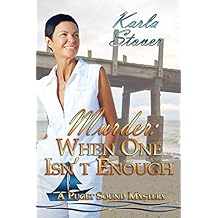For more information about
Susan Calder's books, or to purchase, please visit Books We Love Author Page.
My hometown of Calgary is in the midst of its annual 10-day festival, billed as The Greatest Outdoor Show on Earth--The Calgary Stampede. Local stores are decorated with bales of hay. Bank tellers sport cowboy hats and bandanas. Every day, you can have your pick of a dozen pancake breakfasts sponsored by retail malls, companies, churches and politicians.
It's a city-wide party, comparable to the carnivals in Venice, New Orleans and Rio de Janeiro. I'm told that Calgary's birthrate always spikes in April, nine months from now.
The week before this summer's Stampede, I participated in a reading and discussion with three other authors of books featuring the Stampede and/or Calgary's western heritage. About eighty people attended our event titled Side-saddled: Local Writers Take on the Stampede, which shows how much Calgarians like to talk and read about themselves.
Part of our goal for the night was to look beneath the hoopla to some of the controversies surrounding the Stampede. One that we couldn't neglect was animal rights. Every year, horses and cattle die during training or at the rodeo or chuckwagon races, often from a heart attack or a broken leg that requires they be put down. Animal rights activists stage protests, calling for the abolition of these grueling competitions.
 |
| Chuckwagon - a modern day Chariot race |
In my novel, Ten Days in Summer, set against a backdrop of the Stampede, I touch on this issue through my protagonist Paula's daughter, Erin, aged twenty-two and an animal lover.
A small safety pin remained pinned to Erin’s pants,
beneath two other black ribbons.
"Is that a new style?" Paula asked.
"Is that a new style?" Paula asked.
“It's to honour the animals who’ve died at this year’s
Stampede—so far,” Erin said.
Paula, too, felt sad when she read about a horse having a heart attack
or crashing in a chuckwagon race. Unlike Erin, though, she didn’t think animal
deaths were a reason to abolish the rodeo and chuckwagon events at the
Stampede. Did humans treat animals better elsewhere? Paula had once made the
mistake of joking to Erin that cattle participation in roping and wrestling
competitions was better than their alternate career path: meat. Erin wouldn’t
talk to her for days.
During the discussion, our panel tended to agree with Paula. Author Aritha van Herk, who researched the Stampede for her book Stampede and the Westness of the West, noted that deaths of chuckwagon horses were usually due to the genetic weaknesses of these thoroughbreds. If they couldn't be chuckwagon racers they would go to Europe as horse meat.
The Stampede's macho culture also came up in our discussion. Aritha mentioned that during the festival's early years, almost 100 years ago, women competed in the rodeo events with considerable success. Now they are banned from both the chuckwagon races and rodeo, aside from the lower status barrel racing.
Young women can become a Stampede Queen or Princess, subject to the usual beauty pageant requirements. Except, instead of a bathing suit contest, they must be able to ride a horse. Our current mayor of Calgary also learned to ride for the two hour downtown Stampede parade. A Calgary mayor would be scorned if he or she refrained from riding without a very good reason.
 |
| Side-saddle riding tricks in the Stampede's early days |
To lighten the mood, our emcee Shaun Hunter inserted occasional fun questions.
Which do you prefer? Cowboy hat or boots? I was the only one who chose the hat, which I find comfortable as well as practical for shade and bad hair days.
What was the name of the first horse you rode? The others gave their answers right away: Starburst. Sunshine. I was stumped. Being a city girl, I have only been on a horse twice, when my youthful friends dragged me to a riding stable in the country. I was more focused on not falling off than relating to my horse, which no doubt contributed to my riding difficulties.
At the evening's end, Shaun asked the audience to vote for their favourite Stampede cheer by shouting along with her.
Yahoo! She shouted with enthusiastic audience members.
Yeehaw!
The winner? Yaaaaaahoooooo!








 Whether or not to write a sequel isn't an easy decision. Consider Dean Koontz who said, "Too many sequels diminish the original." or John Updike's pithy remark, "I suppose sequels are inevitable for writers of a certain."
Whether or not to write a sequel isn't an easy decision. Consider Dean Koontz who said, "Too many sequels diminish the original." or John Updike's pithy remark, "I suppose sequels are inevitable for writers of a certain."










